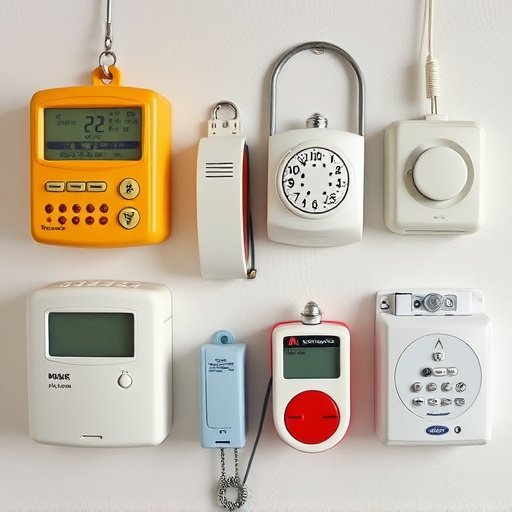Wearable Personal Alarms for Seniors offer essential protection and peace of mind with quick emergency response features like one-button alerts and GPS tracking. Remote monitoring technology allows family or caregivers to track safety in real-time, enhancing independence while ensuring prompt aid dispatch. Choosing the right alarm requires considering ease of use, battery life, range, and integration with services, focusing on features like simple activation, clear alerts, automatic fall detection, and remote location tracking for enhanced senior safety.
Personal protection devices with remote monitoring are transforming senior safety, offering peace of mind in an increasingly independent world. This article delves into the crucial role of wearable personal alarms for seniors, exploring how remote monitoring technology enhances their well-being. We’ll guide you through various types of devices and their features, discussing safety and privacy considerations and providing insights to help choose the right personal protection system.
- Understanding Wearable Personal Alarms for Seniors
- Benefits of Remote Monitoring Technology
- Types of Devices and Their Features
- Safety and Privacy Considerations
- Choosing the Right Personal Protection System
Understanding Wearable Personal Alarms for Seniors
Wearable personal alarms have emerged as valuable tools for seniors seeking enhanced personal protection, particularly in the event of emergencies or falls. These compact and discreet devices are designed to be easily carried or worn, ensuring that help can be summoned swiftly when needed. The primary function is to provide peace of mind by allowing users to activate an alarm with just a simple press, triggering a connection to emergency services or pre-registered contacts.
For seniors living independently, these alarms offer a sense of security and autonomy. They are often equipped with features like GPS tracking, automatic fall detection, and two-way communication, enabling rapid response times in critical situations. With the growing popularity of remote monitoring systems, wearable personal alarms can be integrated into smart home ecosystems, providing an additional layer of safety and convenience for seniors and their loved ones.
Benefits of Remote Monitoring Technology
The integration of remote monitoring technology in personal protection devices offers a myriad of benefits, especially for vulnerable populations such as seniors living alone. One notable advantage is the enhanced peace of mind it provides. With a wearable personal alarm for seniors, caregiving family members or designated emergency contacts can remotely track an individual’s safety and well-being in real time. This technology allows for immediate response to distress signals, ensuring prompt assistance during emergencies.
Moreover, remote monitoring systems enable continuous surveillance without the need for constant physical presence. Caregivers can check in on their loved ones from anywhere, at any time, knowing that they have access to critical data like location and vital signs. This feature is invaluable for maintaining independence while guaranteeing safety, making it a game-changer for senior care management.
Types of Devices and Their Features
Personal protection devices with remote monitoring offer a wide range of options, catering to different needs and preferences. One popular choice is the Wearable Personal Alarm for Seniors. These devices are designed to provide peace of mind by allowing loved ones or care providers to track an individual’s safety remotely. They often include features like automatic fall detection, one-button alerts, GPS tracking, and a discreet design that can be worn as a pendant or bracelet.
Other types of personal protection devices include smart watches with built-in safety apps, portable GPS trackers for children or adults, and even smart home systems that integrate security features. Each device has unique functionalities, such as real-time location updates, automatic alert notifications, and two-way communication. These innovations ensure that help can be dispatched promptly in case of an emergency, enhancing the safety and independence of users across various age groups.
Safety and Privacy Considerations
When it comes to personal protection devices with remote monitoring, safety and privacy are paramount concerns. Wearable personal alarms designed for seniors, for instance, offer a sense of security by allowing them to discretely call for help in an emergency. These devices often incorporate GPS tracking and fall detection features, ensuring swift response times from caregivers or emergency services.
However, it’s crucial to consider the privacy implications of such technology. Seniors or any users should be comfortable with how their data is collected, stored, and shared. Ensuring secure connections and explicit consent for data usage builds trust and reinforces the effectiveness of these personal protection devices.
Choosing the Right Personal Protection System
Choosing the right personal protection system, especially a wearable personal alarm for seniors, involves careful consideration of one’s unique needs and lifestyle. Factors such as ease of use, battery life, range, and integration with emergency services are crucial. A senior-friendly device should have features like simple activation, clear audio alerts, and automatic fall detection, ensuring peace of mind both for the user and their loved ones.
When selecting a wearable personal alarm, it’s essential to look for products offering remote monitoring capabilities. These systems allow family members or care providers to track an individual’s location in real-time, receive instant alerts upon distress signals, and even communicate directly through the device. This technology can be a game-changer for enhancing safety and independence in older adults.
Personal protection devices with remote monitoring, such as wearable personal alarms for seniors, offer a revolutionary approach to ensuring safety. By leveraging technology that allows for real-time tracking and alerts, these devices provide peace of mind for both users and their loved ones. Understanding the various types of devices, their features, and critical safety considerations is key to choosing the right personal protection system. With the right setup, seniors can maintain independence while enjoying enhanced security in today’s digital era.
